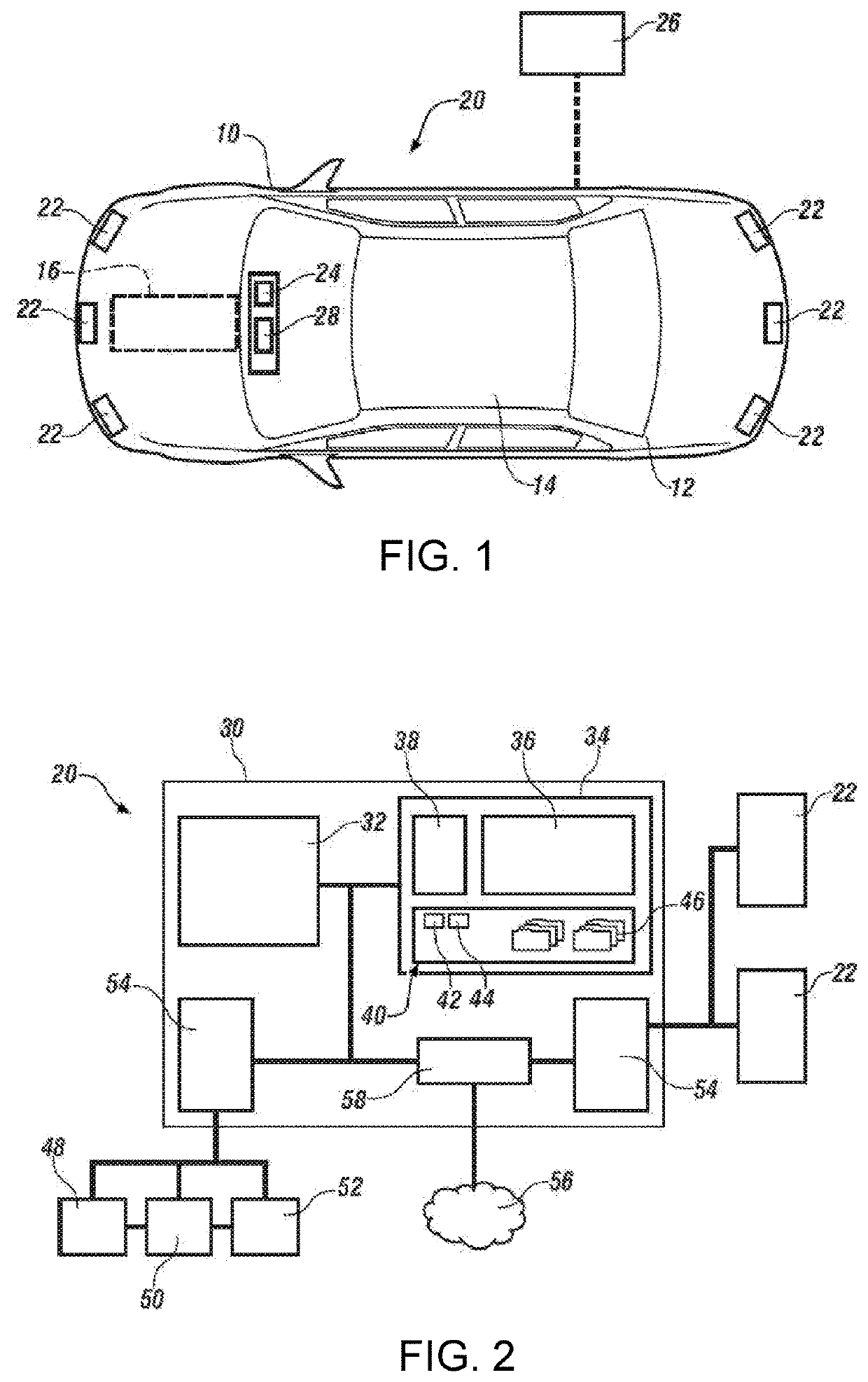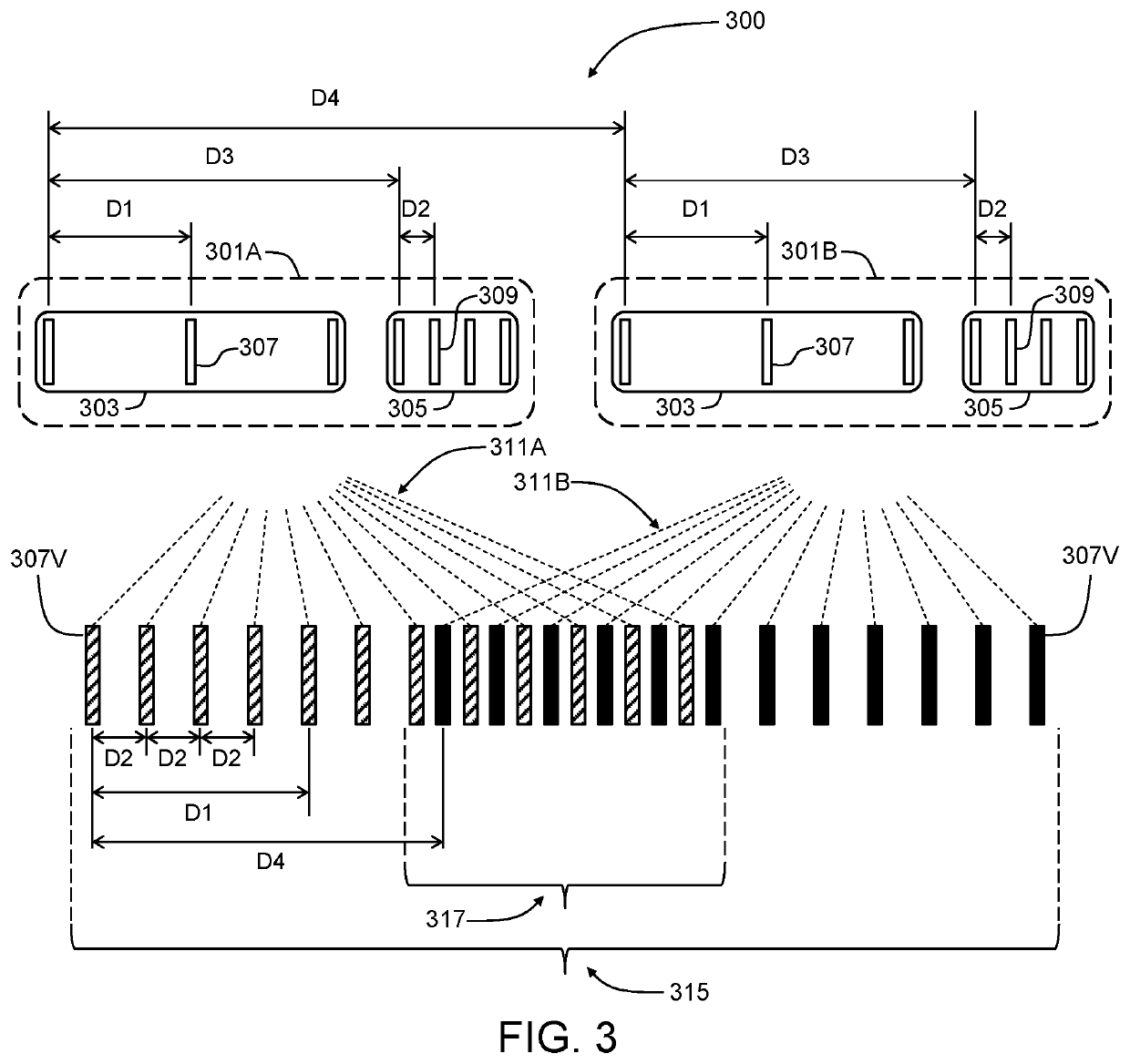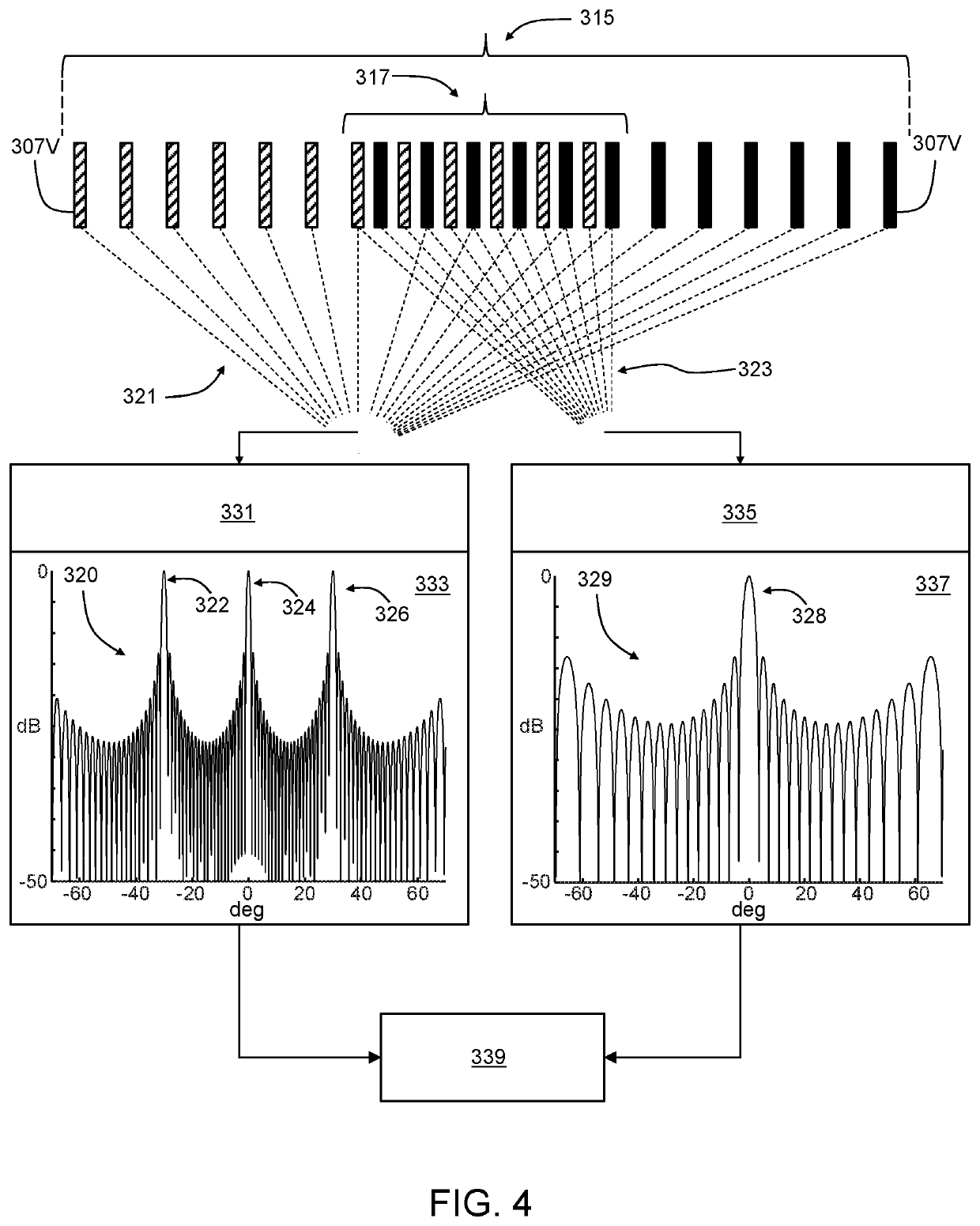High resolution unambiguous radar
a radar and high-resolution technology, applied in the field of radar systems, can solve the problems of limiting the ability to have antennas external from the rf chip, affecting cost and complexity, and not being practicable on a single rf chip
- Summary
- Abstract
- Description
- Claims
- Application Information
AI Technical Summary
Benefits of technology
Problems solved by technology
Method used
Image
Examples
Embodiment Construction
[0033]The following description is merely exemplary in nature and is not intended to limit the present disclosure, its application or uses. Throughout the drawings, corresponding reference numerals indicate like or corresponding parts and features.
[0034]In accordance with one or more exemplary embodiments, methods and systems for high angular resolution and unambiguous angle estimation in a radar device are described herein. Exemplary embodiments may include minimal numbers of different RF chip antenna integrated radar devices. For example, at least two of a single type of RF chip antenna integrated packaging may be arranged to establish a virtual antenna array capable of high angular resolution and unambiguous angle estimation.
[0035]FIG. 1 shows an embodiment of a vehicle10, which includes a vehicle body 12 defining, at least in part, an occupant compartment 14. The vehicle 10, while shown in FIG. 1 as an automobile, may be any truck, aircraft, construction equipment, farm equipmen...
PUM
 Login to View More
Login to View More Abstract
Description
Claims
Application Information
 Login to View More
Login to View More - R&D
- Intellectual Property
- Life Sciences
- Materials
- Tech Scout
- Unparalleled Data Quality
- Higher Quality Content
- 60% Fewer Hallucinations
Browse by: Latest US Patents, China's latest patents, Technical Efficacy Thesaurus, Application Domain, Technology Topic, Popular Technical Reports.
© 2025 PatSnap. All rights reserved.Legal|Privacy policy|Modern Slavery Act Transparency Statement|Sitemap|About US| Contact US: help@patsnap.com



